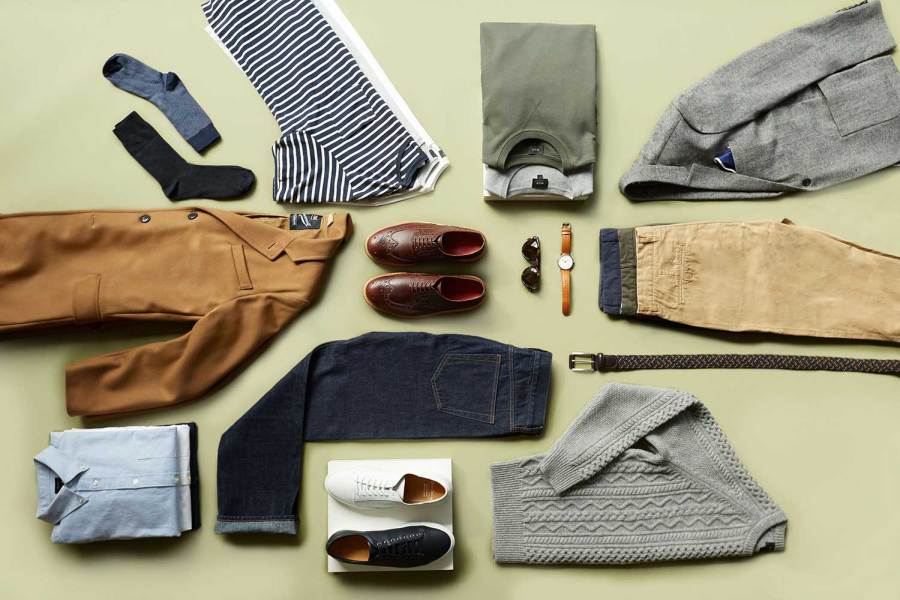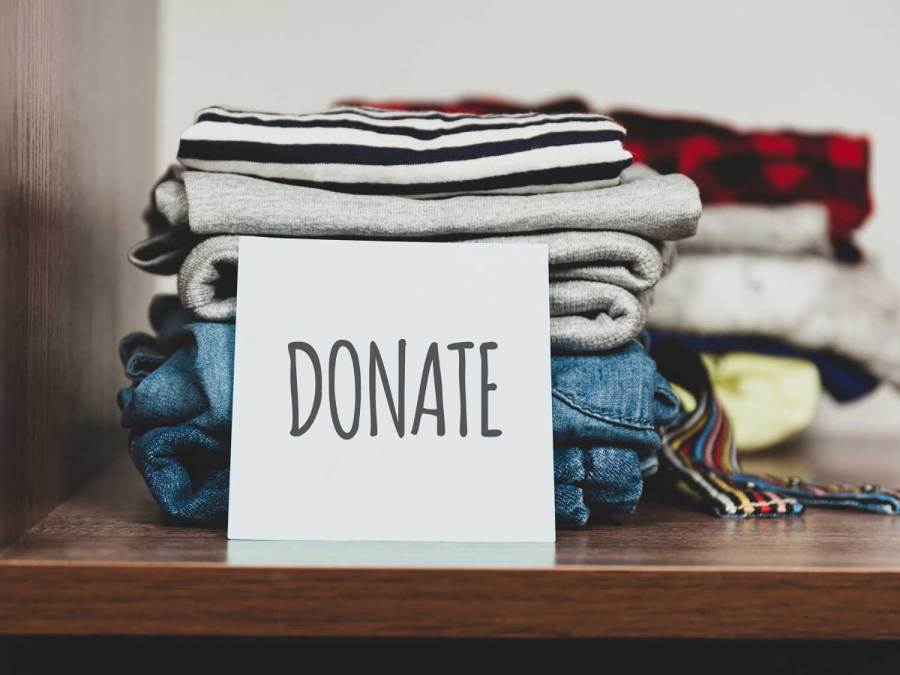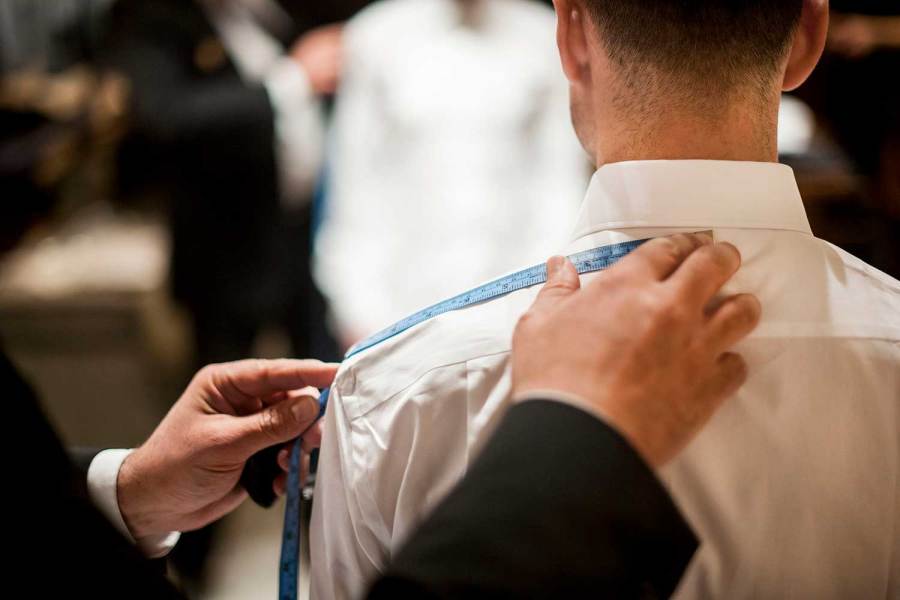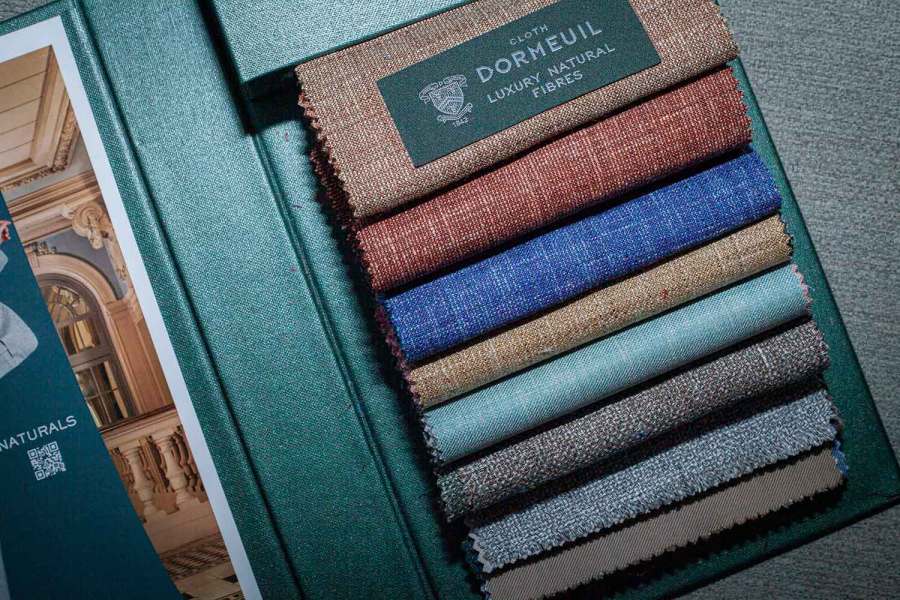Shared from hespokestyle.com
What is a sustainable wardrobe?
A sustainable wardrobe essentially refers to any clothes that are produced and consumed in an environmentally and socially conscious way. The fashion industry is responsible for a large percentage of global greenhouse gas emissions each year, but sustainable fashion seeks to combat this.
Because of this, many sustainable clothes are created using a much lower amount of CO2 emissions, which leads to reduced pollution in the air and water. At the same time, sustainable brands cut down on overproduction to eliminate waste and prevent discarded materials from ending up in landfills.
In a sustainable wardrobe, many of the items are also eco-friendly and biodegradable. The fabrics used in production are often organic and safe for the environment. Oftentimes, fashion brands use and repurpose recycled materials that would have otherwise been thrown out.
As part of the sustainability movement, many brands also focus on fair wages and safe working environments for their employees. Some eco-minded brands even contribute some of their profits to bettering the environment.
Technically, there’s no such thing as 100% sustainability – after all, even the greenest of companies use resources and have an impact on the environment and the people around them. Still, you can support fair industry practices, cut down on greenhouse emissions and toxicity in the environment, and reduce waste by purchasing eco-friendly clothing and building a sustainable wardrobe.
Importance of a sustainable wardrobe
It’s one thing to suggest shopping sustainably, but quite another to understand the full impact of doing it. So, here are some facts and statistics about the fast fashion industry to give you a better idea of why it’s so important:
– Fast fashion is responsible for as much as 10% of all carbon emissions worldwide (mostly due to shipping and production).
– 20% of all wastewater in the world is the result of dyeing and treating fabrics.
– Approximately 87% of fibers used in textile production either end up in a landfill or are incinerated, which leads to further air pollution.
– Synthetic materials like polyester and microfibers are not biodegradable and end up dumped in the oceans where they can remain for decades.
(Sources: Ellen Macarthur Foundation and United Nations Environment Programme)
Sustainable fashion exists to help reverse, control, and minimize the effects of the industry. For example, unlike fast fashion brands, eco-friendly clothing is constructed from organic materials like cotton and hemp. These materials are renewable and produced in a way that’s safe for factory employees and the environment.
Plus, you don’t have to give up durability or style for a sustainable wardrobe. On the contrary, eco-friendly clothing is often long-lasting and, in the case of made-to-measure clothes, designed to your exact specification. It also doesn’t require frequent replacement, meaning you can build upon your wardrobe throughout the years in a way that’s uniquely your own.
It’s okay if you already have non-sustainable clothes in the closet, but it never hurts to be aware of the environmental and social impact of the things we buy or wear. By keeping sustainability in mind when you shop, you can make a difference in fixing them.
How to build a sustainable wardrobe
So now’s the big question: How can you actually build a sustainable wardrobe?
If you’ve never done it before, it can seem overwhelming at first. Once you get started, though, you’ll find it’s rather easy to do. From buying custom or bespoke menswear to organizing your existing wardrobe, there are ways to make sustainable shopping a normal part of your routine.
1. Organize and plan your wardrobe
The first step is to take a step back and look at what you already own. Try to view the clothes in your wardrobe in a new light. Look at the tags to see how they’re made, as well as what materials or dyes are involved. Ask yourself what kind of impact they might have on the environment.

Some clothing items might already be semi-sustainable, such as a pair of pants made from organic cotton or wool. Others might have been sourced and locally produced, thus lessening their carbon footprint.
The goal here isn’t to toss out your wardrobe. It’s to figure out what you have and what styles and fabrics you prefer. That way, the next time you want a wardrobe update, you’ll know where to start – and what to avoid.
2. Deal with unused excess
A lot of people have items in their closet from previous decades that either no longer fit or aren’t really their style. If that sounds like you, chances are you have clothes you no longer wear that are just taking up space.
While getting rid of them sounds like a good idea, you’ll need to make sure you do it in an environmentally safe way. Otherwise, that polyester shirt or those Levi’s jeans could end up in a landfill somewhere.

If your clothes are in good shape, ask around if anyone you know is interested in taking them off your hands. Or, donate them to the Salvation Army, Goodwill, or another thrift store. Part of sustainable fashion is about recycling and reusing goods, after all.
And, if you’re not quite sure if you want to get rid of something, set it aside for a few weeks. If, after that time, you’re still not interested in wearing it, donate it, too.
Remember, the goal here is to use what you have, recycle what you don’t need, and reduce excess.
3. Fix up worn items
Even the best construction or highest quality threads can’t hold up forever. Some items might need to be lightly patched up or have their seams repaired. If you’re handy with a needle and thread (or sewing machine), you can always do this yourself. Otherwise, find a tailor to fix up the clothing instead.

If something you love is beyond repair, don’t immediately throw it away. Consider repurposing it into something more functional or decorative. Depending on the garment, you might be able to use parts of it in a small memory quilt, make a dog’s toy, or convert it into rags.
If it’s really worn through, consider donating it to a local animal shelter. Many of these places are open to old, unusable clothing and blankets since they make for great beds for animals.
4. Rethink how you shop (and research brands)
The next time you go shopping for clothes, think about what you need and where it’s coming from. A lot of people add items that appeal to them in the moment to their online cart or head to the store to buy new clothes. But this isn’t always the most sustainable option.

Instead, try to have a solid idea of what would fit your style and make your wardrobe even better than before. Once you’ve settled on what you need, do some research into ethical brands that offer those types of clothes. See how they procure their materials and if the working conditions and wages are good for their employees.
One way to make sure you’re choosing a good brand is if they mention “locally sourced and produced” on their labels or website. Another option is to go with brands that produce made-to-measure garments since these usually mean less waste and no overproduction.
5. Purchase custom menswear
There are several benefits to buying bespoke or made-to-measure menswear, especially if the alternative is to go with a major chain store or fast fashion brand.
For one thing, custom-made clothing doesn’t have the same problem with overproduction that’s common with many fashion brands. With tailored menswear, you can build a sustainable wardrobe that suits your preferences and fits exactly the way you want it to without contributing to excess waste.

Many made-to-measure shops offer high-quality, custom garments ranging from suits to jackets to accessories. And, because they’re not mass-produced, you can be assured that every piece is made with the best craftsmanship and a focus on style and longevity.
6. View your wardrobe as an investment
A sustainable wardrobe is one that’s meant to last a long time. So, every time you go shopping for new clothes, look at each item as an investment. Sustainable and eco-friendly clothing can be more expensive than what you’d find at most retailers, but it also holds up much longer. This gives it a much lower cost-per-wear ratio – in other words, it’ll pay for itself several times over.
7. Keep thinking outside the box
Your wardrobe should ideally have the staples, but that doesn’t mean you can’t get creative with it. But have you ever looked in your closet and wished you had a more exciting wardrobe? Well, one way to build a sustainable wardrobe is to keep an open mind when shopping.
You’d be surprised at how many interesting combinations you can make with the clothes you already own, especially if you add one or two complimentary pieces to your closet.
For example, you could play around with layering clothes in different seasons. A nice sports coat or jacket with a contrasting collared shirt can add depth and style to your day. Or you could dress down a pair of chinos with a navy or dark grey shirt and casual shoes. Whatever you do, just make sure each item fits well or it could end up looking too bulky.
8. Take care of your clothes
Focusing on fabric quality and construction is one way to build a sustainable wardrobe, but it’s not the only thing that matters. It’s easy to toss dirty clothes in the washing machine and dryer, but it’s not necessarily a good idea.
Most clothes have specific washing instructions. Some even suggest washing them alone and leaving them out to air dry or using a tumble dry low cycle. While you’re at it, try to use detergents that are non-toxic or derived from plants since they’re better for the environment.
It might be an extra step now, but taking care of your clothes will ensure they last a long time.
9. Avoid (and buy) certain fabrics
An eco-friendly wardrobe should primarily consist of natural or organic materials, such as hemp, cotton, and wool. These materials are better than synthetic ones because they can break down naturally and compost cleanly into the environment. Plus, certain plastics can leach harmful chemicals into the air, which leads to more pollution.

Check if your clothes have any dyes. Eco-friendly dyes are fine, but there are a lot of more toxic dyes out there. Some clothing brands market their products as “eco-friendly” without taking into consideration the production process or dyes used.
When building a sustainable wardrobe, look for official organic certifications like OEKO-TEX 100. That way, you can be sure your clothes are truly eco-friendly.
10. Shop vintage
If you’re feeling adventurous, add in a few vintage or secondhand clothing items. You can find an incredible number of unique styles, designs, and cuts at estate sales, thrift shops, and even online. Plus, since you’re essentially recycling something that already exists, you’re promoting sustainability.
Remember, shopping vintage doesn’t mean sacrificing quality. After all, any clothes or other items that fall under this category have held up this long. Chances are they’ll last a good deal longer with proper care.
Bottom line for a sustainable wardrobe
More brands than ever have shifted gears to focus on sourcing, designing, producing, and distributing eco-friendly clothing. Once you know what to look for and what to avoid, building a sustainable menswear wardrobe can actually be quite easy.
By shopping sustainably, you have the opportunity to help out the environment, support fair labor practices and safe working conditions, and cut down on waste. All it takes is that first step.
Thanks for reading.
Stylishly Yours,
Angela Mae
He Spoke Style
Images and Article from hespokestyle.com



